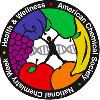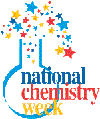Learning about the Human Body: Print Resources
This is a collection of print resources about the human body. A separate collection of Electronic Resources is also available.
Below are outstanding and recommended titles by the National Science Teachers Association that fit this year’s theme for National Chemistry Week. Descriptions are based on reviews from the NSTA web site.
Key: E = Elementary (K–5), I = Intermediate (6–8), HS = High School (9–12), C = College, G = General Public
- DK GUIDE TO THE HUMAN BODY. Richard Walker. Illustrated with photographs. DK Publishing, 2001. 64pp. ISBN 0-7894-7388-7. (HS)
- Dynamic computer-enhanced, three-dimensional illustrations reveal the
inner world of the human body. Multiple imaging techniques such as
X-ray, MRI, and CT scans present the reader with views of the human
body from the microscopic to the macroscopic level. Each image helps
to explain the complex functions of the body systems. Glossary,
Websites, Index.
Source: 2002 NSTA Outstanding Science Trade Books for Students K-1 - E ENCYCLOPEDIA: THE ULTIMATE ONLINE LEARNING RESOURCE. DK Publishing and Google. NY: DK Publishing, 2003. 448 pp. ISBN 0789498693. (E, I, HS)
- This book provides a general encyclopedic treatment of many academic
areas. The text is accurate and easy to read, and the photographs and
diagrams are eye-catching. DK Publishing has developed a website with
Google.com that provides supplemental links via the Internet to various
other “learning opportunities” on each of the topics it
lists. This resource-within-a-resource is easy to navigate and use.
The web resources include animations, videos, timelines, and real-time
reports, and other related websites. This book and its companion
website can eliminate wasted time surfing the web for specific
information by providing the appropriate links directly from one
website.
Source: NSTA Recommends - GROSS UNIVERSE: YOUR GUIDE TO ALL DISGUSTING THINGS UNDER THE SUN. Jeff Szpirglas. Toronto, Ontario, BC: Firefly Books, 2004. 64 pp. ISBN 1894379659. (I)
- This book is one of a growing group of books that use the lure of the
“gross” and “sickening” to engage middle
school students in the study of science. It features 28 sections of
fun and interesting facts about topics that most adults would consider
slightly nauseating — nose mucus, intestinal methane, vomit, and
perspiration. A cartoon dialogue between two scientists throughout the
book makes facts understandable to kids, and colorful artwork vividly
illustrates the gross descriptions in the text. Strange and disgusting
facts may be an excellent hook for readers, but the author also
broadens their knowledge with sound science and applications from the
animal kingdom. At the end of this neat little book the author credits
38 “amazing and awesome” researchers that helped make this
book scientifically accurate.
Source: NSTA Recommends - HEAD TO TOE SCIENCE. Jim Wiese. NY: Wiley, 2000. 120 pp. ISBN 0-471-33203-8. (E, I)
- This book has some wonderful experiments. It explains why experiments
are done and the science behind the physiology. Organized into systems
(nervous, digestive, respiratory, circulatory, muscular, skeletal,
reproductive, and the skin), it offers 48 different projects, each
containing a focus statement or question, materials needed, the
procedure, and an explanation. The experiments are simple, easy, and
safe and state which ones require adult supervision. The experiments
can be done individually, as a class activity, or in a group. If
pressed for time, a teacher could convert many of the experiments to
demonstrations. Many experiments allow observation, study, and graphing
over a period of time. This book enhances students’ understanding of
human body systems and moves learning beyond memorization. It is a must
for any teacher of human body systems. It makes teachers and parents
realize that one experiment truly is worth a thousand words!
Source: NSTA Recommends - HUMAN BODY REVEALED. Sue Davidson and Ben Morgan. DK Publishing, 2002. 38pp. ISBN 0-7894-8882-5. (I)
- Visual representations of the body are nothing new. This volume is
unique in the spectacular quality and quantity of images displayed.
Use of transparent templates allows the reader to “peel away”
layers, revealing the interactions among bodily systems. Micrographs
supplement the macroscopic descriptions to yield added dimension. Index.
Source: 2003 NSTA Outstanding Science Trade Books for Students K–12 - INSIDE YOUR OUTSIDE! ALL ABOUT THE HUMAN BODY. Tish Rabe. NY: Random House, 2003. 45 pp. ISBN 0375811001. (E)
- Young children will love this Cat in the Hat -style introduction to the
human body. Beginning readers will enjoy the rhyming and the
illustrations. Whether children read this book independently or listen
to it as a read-aloud, it will reinforce the science content. The topic
is appropriate for early childhood education since learning about the
body is included in national and most state standards. While other books
on the subject of the human body that go into greater detail and
specificity and deal with the topic in a more scholarly way, this
Seuss-like style has a great appeal for children. This book is a good
choice for teachers looking to integrate reading and science.
Source: NSTA Recommends - LEARNING ABOUT MY BODY: SCIENCE WORKS FOR KIDS SERIES. Jo Ellen Moore and Jill Norris. Monterey, CA: Evan-Moor Corporation, 2000. 80 pp. ISBN 1-55799-773-X. (E)
- This series is designed to engage young learners in active science. It
includes teacher background and reproducible worksheets to support
investigations of anatomy. There are two main concepts addressed in this
book: the body has structures and behaviors that help it grow and
survive (including external and internal parts, a brain, and the five
senses), and we must take care of our bodies through good nutrition,
rest, cleanliness, exercise, and attention to safety. Diagrams and
drawings throughout the book are very student-friendly. All of the
activities use simple materials to engage students in good science.
This book could be used as a stand-alone science unit or integrated
easily into a thematic unit. Includes a lengthy bibliography of excellent
literature books that could be used to create thematic lessons.
Source: NSTA Recommends - SCIENCE EXPERIMENTS: THE HUMAN BODY. John Farndon. Tarrytown, NY: Benchmark Books, 2001. 32 pp. ISBN 0-7614-1339-1. (E, I)
- This book couples accurate information with an experiment for each
topic. Instead of a separate section on each body system, the author
writes about body systems in a way that makes logical connections. It
starts with a section on cells and then introduces students to organs
and systems. After making a “lung” out of two balloons and
a soda bottle, students will learn about the respiratory and circulatory
systems and how blood connects them. Nutrition and digestion are
connected by the need to fuel the body. Sections on bones, muscles, and
the nervous system round out the tour of the human body. Experiments are
written in kid-friendly terms with excellent photos to support them.
Scattered throughout the book are notes and sidebars that explain
experimental results, offer fascinating facts and figures, examine
certain topics in depth, and connect concepts with real-world
applications. These bring added depth to high-interest content like
muscle building, prosthetics, and sweat. The glossary is less than a
page long and somewhat limited, but the index will help the reader
quickly locate needed topics.
Source: NSTA Recommends - TASTING IN LIVING THINGS. Karen Hartley, Chris Macro, and Philip Taylor. Chicago, IL: Heinemann Library, 2000. 32 pp. ISBN 157572250-X. (E)
- This book invites children to explore their own senses and to compare
them with other animals. It includes suggestions for hands-on
discovery activities. This book outlines the processes and structures
involved in the human sense of taste. It also explores different
mechanisms of chemical detection employed by other species.
Photographs and illustrations are bright, clear, and appealing.
It shows people of all ages, ethnic heritages, and disabilities.
Source: NSTA Recommends - ZOOM: HUMAN BODY. Nicholas Harris. Farmington Hills, MI: Gale Group, 2002. 31 pp. ISBN 1567116930. (E, I)
- Have you ever used the “zoom” feature on a camera? It
enables your eye to capture progressively more detail as you zoom in.
Each book in the Zoom series uses the same technique with a single
topic in science. Page after page, text boxes describes that science
area in greater detail, encouraging the reader to “zoom”
in for a closer look at that topic. The Human Body starts with an
image of a sleeping child. The reader flips a cut-out shaped like a
lens to take a closer look at the organs. Includes glossary.
Source: NSTA Recommends
Copyright © 2004 American Chemical Society


